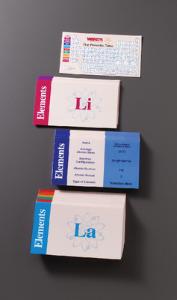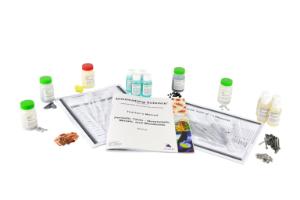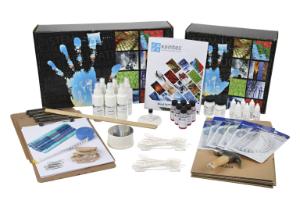Chemistry Elements Fun Facts
High School
Do the budding chemists in your classroom have questions about the stuff that everything is made of? Their curiosity is understandable since everything in nature, from the clouds to the trees and the air we breathe, is made of elements.
Your lesson plans help students discover how the things they see every day (including the face in the mirror) contain these common and unusual elements. Of course, they may be familiar with some elements like glittering gold, iron, oxygen, and the voice-altering helium. But those just scratch the surface of the 118 elements. There are so many fun facts to discover about the different elements. Here are just a few that your students will enjoy learning:
- Beryllium - Beryllium is two-thirds the density of aluminum and has six times the specific stiffness of steel by weight. Beryllium ceramics are used to focus and control eye surgery lasers.
- Helium - Helium atoms are so light that they can escape Earth's gravity! Helium is used in rocket propulsion (to pressurize fuel tanks, especially those for liquid hydrogen, because only helium is still a gas at liquid-hydrogen temperature).
- Hydrogen -Although it’s rare on Earth, Hydrogen is the most common element in the universe. Hydrogen can be combined with carbon dioxide to make methanol or dimethyl ether (DME) which are important transport fuels.
- Lithium - Lithium is the lightest of all the metals and can easily float on water. Lithium chloride is one of the most hygroscopic (absorbs moisture from the air) materials known and is used in air conditioning and industrial drying systems (as is lithium bromide).
- Carbon - The amount of carbon on Earth is relatively constant; it’s simply transformed from one form to another by the carbon cycle. Impure carbon (e.g. charcoal from wood and coke from coal) is used in metal smelting. The iron and steel industries depend on it.
- Fluorine - Fluorine is the most receptive and electronegative of all the chemical elements. It doesn’t respond with oxygen, helium, neon, and argon.
- Neon - Neon is mainly found in stars. Neon is the 5th most common element in the universe but comprises only 0.0018% of the Earth's atmosphere.
- Oxygen - Oxygen is the third most abundant element in the universe; however, its reactivity made it relatively rare in Earth's early atmosphere.
- Sodium - Although abundant on Earth, sodium is never naturally found in its pure form; it forms compounds with other elements.
Elements are the building blocks of life and human innovation. Everything we create from computer motherboards, towering skyscrapers, bridges, medicine, clothing, and everything else comes from our ability to harness the properties of the elements for our benefit.
Recommended Products
[StartProductBlock]

Ward's® Periodic Table of the Elements Flash Cards
Each card contains the atomic symbol, the element name, atomic number, atomic weight, electron configuration, period, and element family.
[EndProductBlock]
[StartProductBlock]

Periodic Table - Nonmetals, Metals, and Metalloids
Students investigate the unique physical and chemical properties of elements that classify them as either nonmetal, metal, or metalloid.
[EndProductBlock]
[StartProductBlock]

Elements, Compounds, and Mixtures II Lab Activity
Demonstrate photosynthesis and respiration in action with our ready-made algae beads.
[EndProductBlock]
